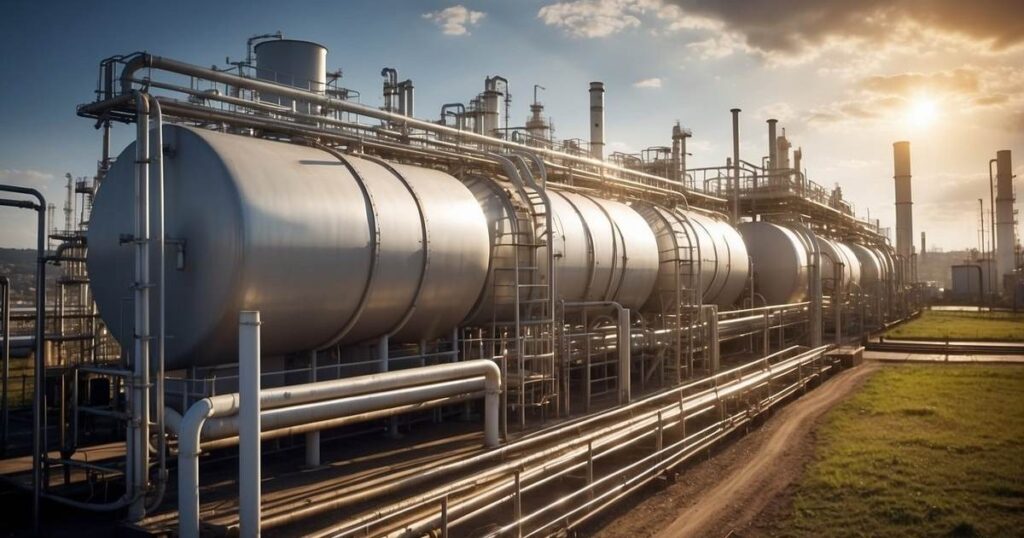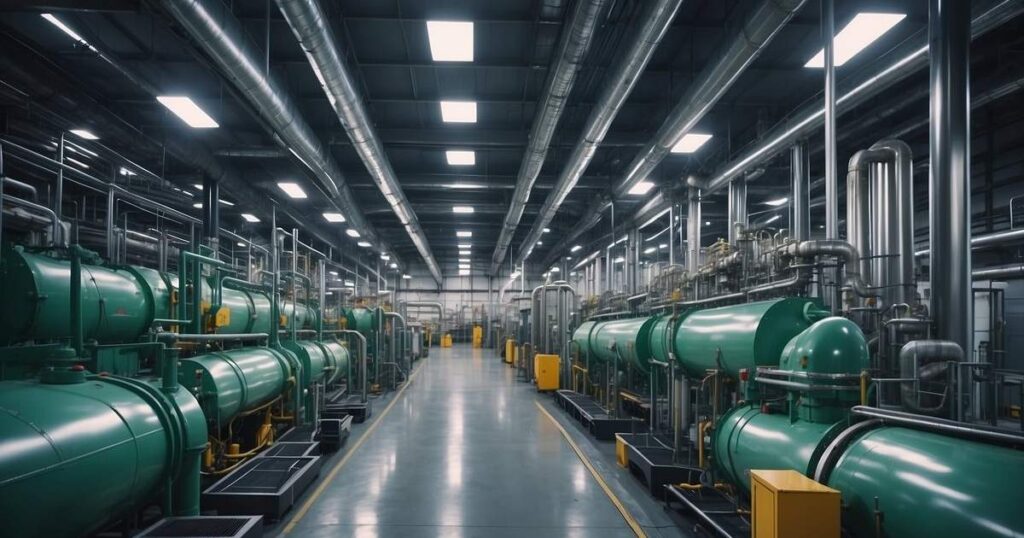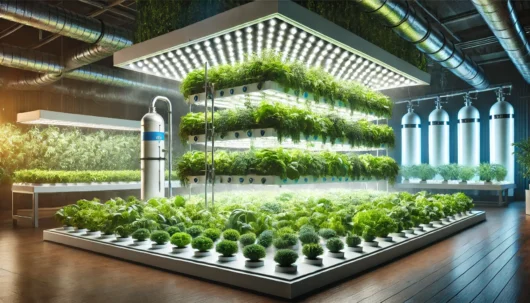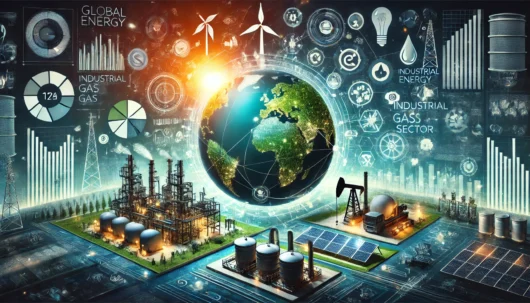As we observe the industrial gas supply landscape, it’s evident that the dynamics of this industry are in a constant state of flux, influenced by global trends and an ever-evolving energy transition that is impacting the future of industrial gas supply. Your awareness of these changes is crucial, as economic growth, geopolitical tensions, and technological advancements affect the supply and demand for industrial gases. The drive towards sustainability prompts the industry to adapt, seeking greener production methods and efficiency improvements in the supply chain.
Your understanding of technological developments is particularly significant, as they hold the promise of refining industrial gas production, storage, and distribution. Investment in such technologies is shaping a future where industrial gases not only meet different needs across different sectors but do so in a way that aligns with environmental objectives. As you navigate these changes, staying informed about the supply trends will enable you to anticipate challenges and identify opportunities.
Key Takeaways
- Global dynamics and sustainability are pivotal in shaping the supply and demand of industrial gases.
- Technological innovations are central to improving the efficiency of gas supply chains.
- Your understanding of these elements is fundamental to forecasting the industry’s trajectory.
Global Trends and Dynamics in Gas Supply

In navigating the future of the global gas supply, you need to consider the shifting balance between supply and demand, economic factors, geopolitical influences, and the overarching move towards energy transition. Resilience in the face of these changes will dictate the robustness of supply chains.
Supply and Demand Balance
Your understanding of the natural gas market hinges on the balance of supply and demand. Global gas demand is subject to shifts in the power sector, with LNG demand growing as regions move away from coal use. However, LNG projects must keep pace with this demand, with supply expected to remain tight until the mid-2020s.
Industrial Gas Economics
The economics of industrial gases are deeply intertwined with the broader energy economy. Price volatility in the oil market indirectly affects natural gas prices, impacting affordability. Keep in mind that while fossil fuels remain dominant, the rise of renewables is beginning to alter the economic landscape.
Impact of Geopolitical Factors
Geopolitical tensions play a decisive role in shaping gas supply. Europe’s dependence on Russian gas has been highlighted by recent crises, prompting a search for alternative supplies. Similarly, the Middle East and Russia face competition from the emergence of the United States as a significant LNG exporter.
Energy Security and Transition
Energy security is at the forefront of global concerns. Your awareness will note the push for a clean energy economy, driving the adoption of low-emissions hydrogen, biogas, and biomethane. The energy crisis has pushed the EU and others to reduce dependence on fossil fuels and transition towards a clean energy future.
Challenges and Resilience
Supply chains face obstacles such as geopolitical instability and disruptions, which cause immediate supply concerns. Resilience is vital in these chains, with an increasing focus on the security of supply against such disruptions. Your ongoing challenge is adapting to the dynamic energy transition and meeting climate goals without compromising emissions targets.
Technological Advancements and Sustainability

Your understanding of the industrial gas supply landscape will significantly benefit from recognising the interplay between technology and sustainability. These two facets shape how industries operate and how the future of energy is being constructed.
Innovations in Industrial Gas
Innovative applications of Industry 4.0 technologies, like advanced analytics, optimise plant operations and delivery mechanisms in your sector. Implementation of digital tools ensures a more reliable supply chain, particularly in pressing times such as those experienced during global crises. Alongside, e-methane and biomethane are emerging as sustainable alternatives, contributing to a cleaner industry. Moreover, hydrogen is gaining traction as a fuel and a crucial element in energy storage for electric vehicles (EVs) and power stabilisation.
- Digital advancements: Streamlined ordering processes for bulk or packaged gases.
- Green production: Use of renewable energy sources, like solar and wind power, in LNG production.
Renewable Energy and Gas
Your integration of renewable energy with natural gas is pivotal in fostering a clean energy economy. Gas can facilitate the global transition to a low-carbon system by supporting and balancing out renewable power generation. Coupling gas with renewables like solar power and wind power ensures a more stable energy supply, easing the transition towards sustainability.
- Energy collaboration: Dual use of natural gas and renewables for consistent power supply.
- EVs and critical minerals: Lithium and other critical minerals are central to the EV revolution, impacting the demand for industrial gases used in their extraction and processing.
Environmental Impacts and Goals
Your industry’s environmental goals align with advancements designed to reduce emissions and improve efficiency. By embracing technologies for low-emissions hydrogen production and cleaner processes, you help achieve climate goals and diminish greenhouse gas emissions. Investing in clean energy projects and sustainable practices is an ethical choice and a strategic one for long-term profitability and viability.
- Emission reduction techniques: Focus on reducing greenhouse gas emissions through innovative processes.
- Hydrogen as an alternative: Development of low-emissions hydrogen for industrial use and transportation.
Frequently Asked Questions
This section addresses your queries about the future and ongoing changes in the industrial gas supply industry.
What are the emerging trends influencing the industrial gas market?
Increasing efficiency, sustainability measures, and technological integration are prominent trends reshaping the industrial gas market. Companies are leveraging these advancements to meet growing energy demands whilst striving for reduced environmental footprints.
In what way is the geopolitical climate projected to affect the supply of industrial gases?
Geopolitical tensions, trade negotiations, and regulatory changes could impact your supply chain and pricing. Initiatives for local production and alternative sources will likely gain prominence to ensure consistent supply amidst international uncertainties.
How are technological advancements anticipated to impact the industrial gas sector?
Technological innovations, such as improved gas production methods and advanced logistics networks, are set to enhance the efficiency and reliability of gas supply. These developments will likely also enable you to access previously unexploitable gas reserves.
What is the forecasted growth of the industrial gas distribution market?
Projected growth figures for the industrial gas distribution market suggest an expansion due to increased demand across multiple sectors, including healthcare, food and beverage, and manufacturing.
How are environmental regulations likely to shape the industrial gas industry?
Stringent environmental regulations are compelling you to adopt greener practices. You should expect advancements in carbon capture, utilisation technologies, and a shift towards more eco-friendly gases to become normative industry standards.
What factors are currently driving the demand for industrial gases?
The healthcare, energy, and food sectors primarily drive the current demand for industrial gases. Your need for high-purity gases in medical applications and enhanced oil recovery techniques substantially contribute to this increased demand.


